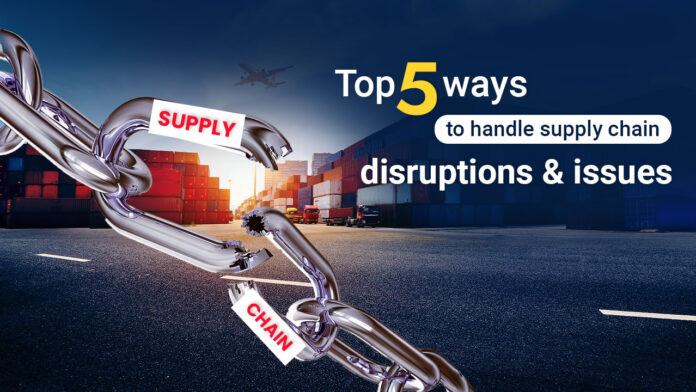What is a Supply Chain?
A supply chain is a system that involves two or more parties to ship and receive stuff to a customer or retailer. It is entirely possible that every single thing that you buy online or from a local vendor has been shipped from other places. The supply chain covers the transformation of raw materials into ready-to-use goods and furthers the economy of the world. The supply chain system is segregated into three parts: First-tier supplies that supply directly to their clients (B2C), second-tier being those who supply first to wholesalers, and the third tier, which is supplying to manufacturers.
What are the Main Components of a Supply Chain?
A supply chain is massive and covers a tremendous amount of stages. Here are some of the key players covered in MBA in Supply Chain Management:
- Warehouse management system
- Packaging and labeling
- Field inventory management
- Supply chain delivery
- Stock keeping unit
- Inventory turnover
What are the Major Concerns Surrounding a Supply Chain?
There are many urgent and longstanding issues surrounding the global supply chain. These unforeseen barriers can be in the form of a pandemic, mass worker shortage, rising diplomatic tensions, and a plethora of other reasons. Here are some of them:
- Changing freight prices
The shipping price exploded during the pandemic. The worldwide lockdowns caused a surge in eCommerce, which directly impacted the previously set expectations of the supply chain. From raw materials to manufactured goods, the surge in demand has been met with an unusual price rise. Even with the dwindled-down unprecedented shipping shortage, the prices remain unstable, causing major breakthroughs in the supply chain. - Difficulties in forecasting
The biggest challenge that surrounds the supply chain is faulty forecasts. Forecasting demands in the midst of altered tastes has been rather challenging for businesses and corporations. This shuffle has been challenging for the supply chain stakeholders, who have to plan for months in advance. As the changing times shattered the previously set forecasts for almost every retailer, it caused a massive upheaval in the supply chain as a whole. - Altering consumer attitudes
The changing attitudes of the consumer have trifled the business in countless ways. The race to finish with the most glowing consumer review poses a serious threat to the entire supply chain, which optimizes on delivery and not on individual fulfillment. Not every port has automated inventory management software and access to technology. Thus, not being on the same page has impacted the supply chain massively. - Evolving digital economy
For major scale operations such as the supply chain, digitalization can both be a boon and a curse. Although technology makes the process rather efficient, the implementation can take a long time. This leaves the entire ecosystem on different pages. - Sudden scarcity
The unforeseen scarcity is an unsolvable challenge because it depends on fixing the forecasting models of ports. The abrupt rise in consumer demand cannot be fixed overnight and needs a considerable amount of time. This buffer has been diminished because of the constantly changing demand and the market’s reaction to that demand. - Poorly managed ports
The biggest challenge for supply chains is port congestion. Almost every station already runs at maximum capacity. This means an increase in demand has a direct impact on the port traffic. Not having even the slightest margin can delay the entire business for months.
5 Ways To Handle Supply Chain Disruptions and Issues
- Enhanced focus on the supplier
The larger focus has always been on the receiver, rather than the supplier. But the chain begins with the latter. The issues of the supplier deserve greater visibility and higher care. There are many agencies that can handle the overbearing costs of supplier’s risk, including the assurance of financial stability and reliable process completion. Shifting our focus to the supplier will have an incredible impact on the smoothing of the supply chain system. - Smoother harmonization of systems
The biggest measure that can be taken to mitigate risk is the use of technology and communication between every stakeholder. From cloud-based solutions to supplier visibility, it is essential that efficient systems are rooted out and faster communication is embraced throughout the chain. As per the newly unveiled Supply Chain Management Syllabus in Kalinga University, smoother coordination is the topic of larger focus for the new graduates. - Embracing technology
Artificial intelligence and Big Data have the potential of handling major crises through their risk-event scenarios. By having a proper contingency plan in place, we can bring these forces together for good and consolidate data. Investment in technology across the board simplifies major tasks and allows us to refocus on the details. Embracing technology also safeguards against cybercrime, which is the biggest threat to modern supply chains. - Keeping tabs on the logistics
Oftentimes the things that sound the most boring are actually the most important. When it comes to large operations, keeping a logistics plan in your purview is vital to safeguarding the supply chain. A Logistics contingency plan is similar to an emergency response plan. The Covid-19 pandemic revealed the importance of present insurance and plans to combat the economic and geographic risks surrounding the supply chain. You can diversify your supply network and establish a quick response in times of crisis by keeping tabs on the logistics of your plan. - The regular expanse of inventory margin
Keeping an inventory margin, also known as inventory buffer, is the best way to prevent disruption in the long run. It is indeed costly, and oftentimes it causes a loss. But expanding as per market need is an inherent requirement in this line of business.
Conclusion,
With the world seeing more uncertain days than regular ones, we are constantly exposed to upheavals. This greatly impacts larger operations that work across the timelines of multiple players. Graduates from the MBA college in Raipurhave attested to the fact that there is no single way to solve every single supply chain issue. Every single step must be taken in congruence with the other. A combined application of technology, communication, and risk planning is our best option to handle the supply chain disruption issue.











